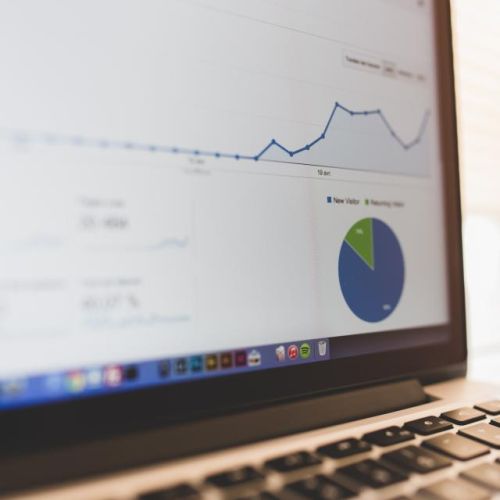Important Metrics in Google Analytics
Updated 29 June 2020 (Published 28 February 2017) by Miles in Digital Marketing
Google analytics is one of the most important weapons in any businesses arsenal. With data of all kinds being a heavy focus for marketers and business owners alike.

For good reason, because what gets measured, gets improved. Yet, with Google Analytics having so many features, it begs the question. Which are the most important metrics in Google Analytics?
Giving you the ability to measure all aspects of your online presence is something great. Hosting many different capabilities, giving you many different metrics, Google Analytics can be a blessing or a curse. Depending on how good you are with technology.
When your brand spends hours upon hours creating the website, creating valuable content, updating and anything and everything else, you want to know if you’re actually making a difference. Because at times it can feel like you’re not seeing the results. Whether it be from that blog post you spent four hours writing or from the features you spent days researching and implementing.
Sometimes, all you need is confirmation you’re doing the right thing. Or perhaps tips on how to do it better. Either way, Google Analytics can come in handy. So when you have so much data and information at your fingertips, such as your customer’s activity, your performance and so on. You can make your business much more optimised and ready for business. Still, regardless of who you are, it can become a bit overwhelming when confronted with so much data.
Unique Visitors by channel
When you’re looking at the visitors on a page, you could be looking at a number of different metrics. But for the unique visitor’s channel, we’re looking at the individual visitors who reached the website, beyond the amount of sessions you’ve recorded.
The unique visitor metric is one that allows the business to clearly see how many people have specifically followed through with a purchase. We’d look at how many sessions that your website has received, compared to the amount of conversions.
Because the amount of sessions doesn’t necessarily translate to conversions, we have to look at the unique visitors. As the unique visitors let the business see the customers who purchase, compared to those who just arrive on the page and look around. These people on the page who merely ‘look around’ could be anybody, searching for anything. For example, they may not want to purchase from you, instead wanting to work for you. So they’ve looked at your website multiple times.
Another example from the physical world being, a man comes into a guitar shop and plays the most expensive guitar. He might come into the shop on multiple occasions, yet has no intention of purchasing.
Average time on page
The average time a visitor spends on your page is a fairly straight forward metric. In addition, its up there with the most important metrics in Google Analytics because of the data it provides. The more time a person spends on a page, we can assume is good. A good takeaway from this metric is determining if the individuals on your site are actually reading your content.
As we all know, consuming content can take time. Reading a 1,000 word blog post for example will take a few minutes out of one’s day. So if you have a blog post like this with thousands of page views yet the average time on the page is 10 seconds. You have a problem.
Page views
Page impressions are the overall amount of views the page has attracted. For example, if one person who has reached your website has consumed multiple pages per session, that tells you that they have followed clicked links. This is important as it’s an indicator that you’ve got strong content and your visitors are enjoying it.
I consider this one of the most important metrics in Google Analytics. This is because it can tell you if your content is resonating with your consumers. It’s much more than just seeing that you’ve gotten X amount of viewers. You can make assumptions based on the click through page view trends.
Bounce rate
When setting up your website, the ultimate goal is to provide the page viewers with valuable content that will then turn into value for you and your company. This is the goal. Although, sometimes it doesn’t happen this way. At some point, you’ll have a website visitor that doesn’t engage with the content on a specific page. And instead of interacting with the page or moving on to purchase or send an enquiry, they just close your website altogether. This metric is called a bounce rate and the rate varies depending on the content and the page layout and setup.
The bounce rate is an important data for a business as it lets you know if your website content is engaging the user. When assessing the bounce rate, you should be considering the goal of the landing page and maybe aim for the user to spend. Because not everyone will be a customer. The goal is to reduce your bounce rate to as low as possible by creating valuable content/information on your website. Depending on your business, the ideal bounce rate may vary and may differ from other industries and goal needed for a specific page. For example, a bounce rate for an e-commerce site may be someone who abandons their shopping cart. Whereas, for a business that needs just a few clients every month, the bounce rate could be a lot different.
Conversions
When talking about Google analytics, a conversion could mean a few things, depending on your business. Because a conversion is just a measurement of a goal that’s been reached. This is obviously one of the most important metrics in Google Analytics.
Since many businesses are different, the idea of a success could differ. For example, a conversion for an e-commerce site could be a sale. Whereas a conversion for another website could be progressing to a certain part of the website. Such as clicking a button which take the visitor to the ‘Contact’ page or can be as simple as merely scrolling down to an area of the website. Whatever your goal is, it can be tracked and measured.
Summary
Google Analytics has a lot of power when it comes to the measurement of your businesses efforts. Still, beyond measurement, it can assist to dictate the direction of the business and assesses if your communications are effective, or not. This is a great for all businesses, as what’s measured, can be improved.
Although Google Analytics has many great features, we feel these five are some of the easiest to understand for a first timer. Thanks for reading our take on the most important metrics in Google Analytics. Good luck with your data tracking, but if you need help, contact us for a consultation.


